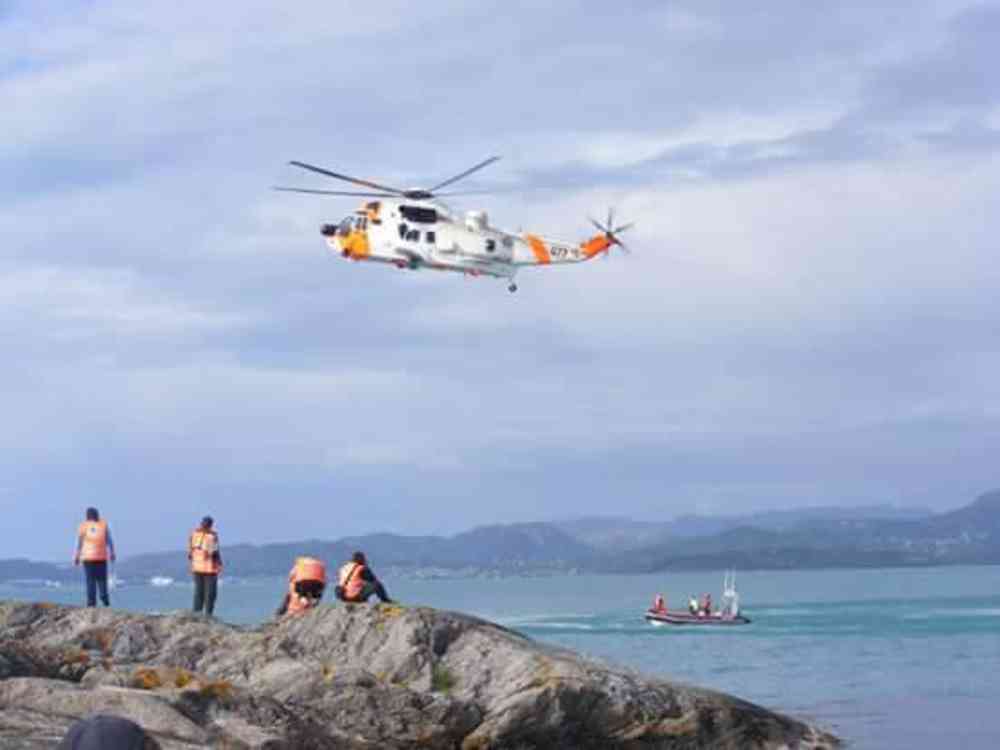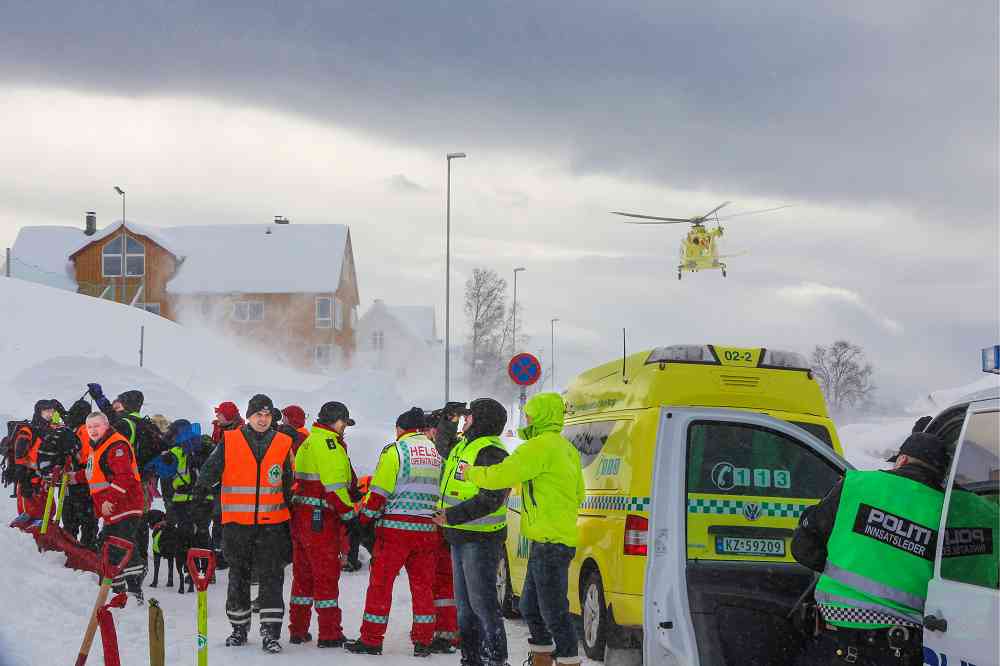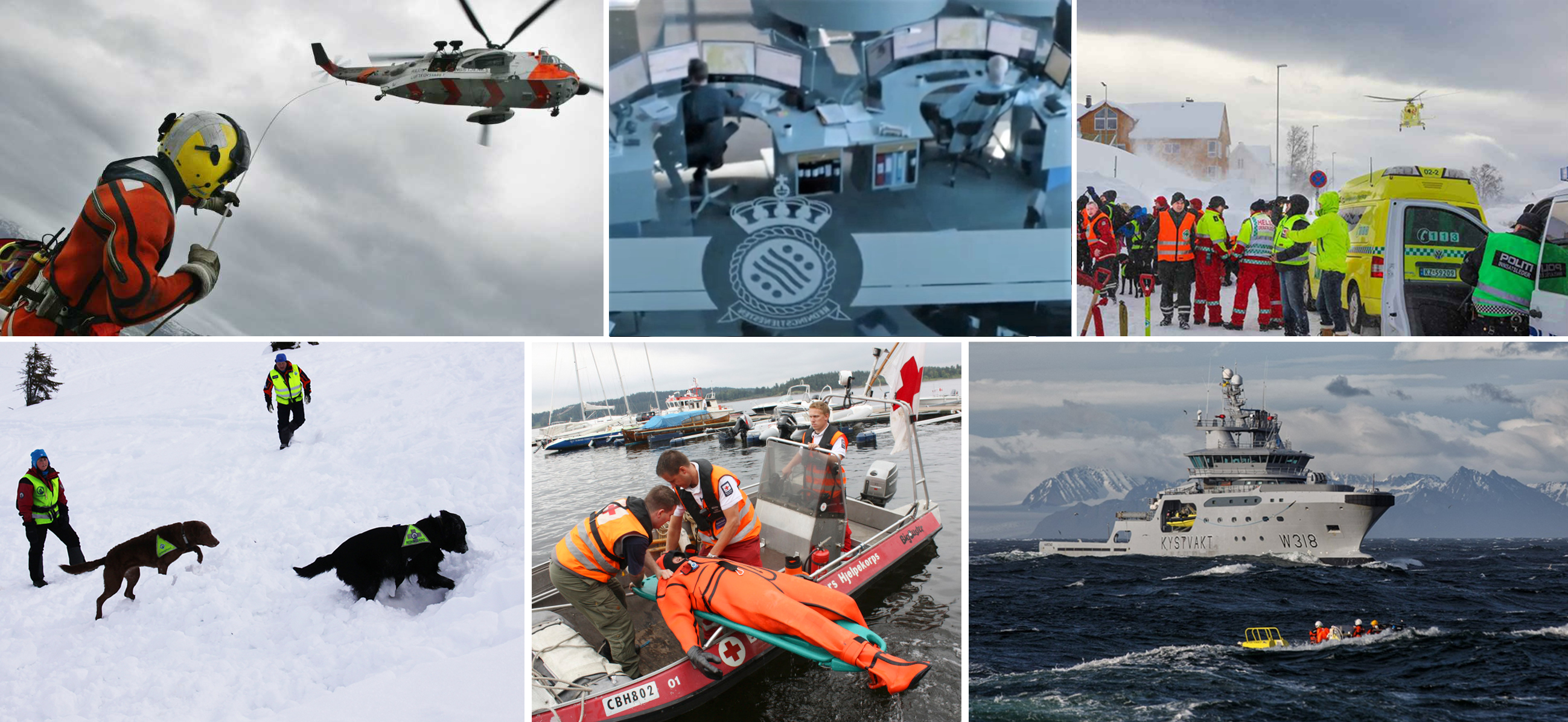The BarentsWatch service is a collection of information about resources from government agencies, voluntary organisations, and private businesses. The Shared Resource Information Repository (FRR) streamlines operational efforts by sharing updated information about relevant resources across agencies and organisations. The tool is an initiative that helps strengthen public security.
Through this shared resources register, operational agencies and other organisations responsible for life, health and environment, as well as material values, will quickly find the right resources.
Support Tools
In an emergency, it is essential that the operational agencies, which maintain 24/7 preparedness, have access to quality assured information about available resources, their expertise, equipment and position, in order to find, select and alarm the closest and correct resources when action is required.
In order to keep robust readiness and effective coordination of rescue missions, one depends precisely on such information about resources before, during and after incidents. In addition to the urgent incident, the FRR will be an appropriate tool for preventive preparedness and public security.
More information:
Questions about the service or input regarding resources may be sent to: fellesressursregister@barentswatch.no
This interaction platform for information sharing and exchange contributes to more efficient management and ensures proper handling of community-critical data across government agencies. The content can easily be adapted to all contingency resources - and will enable the visualisation of areas in which we are resource-efficient and vulnerable to action areas and municipal vulnerability analyses.
Communication and information flow between people at SAR incidents is essential for achieving a shared understanding of the situation – which is central to any handling for effective coordination and management. The services can be used as support tools in an action and provide a common situation picture with real-time information and access to historical data.
Who is behind this initiative?
The Shared Resource Information Repository has been initiated and funded by the public through BarentsWatch – a collaboration between several government agencies and research institutions, with the Norwegian Coastal Administration as the hosting agency.
BarentsWatch is leading the project in close collaboration with a number of resource owners and resource users.
Some of our partners:
The Joint Rescue Coordination Centres (JRCC)
The Norwegian Directorate for Civil Protection and Emergency Planning (DSB)
The Norwegian Red Cross Search and Rescue Corps
The Norwegian Society for Sea Rescue, and their vessels
The Joint Rescue Coordination Centres (JRCC) have been the main driver of the Shared Resource Information Repository in an early phase. The Police Directorate (POD) and the Directorate for Civil Protection and Emergency Planning (DSB) are among those taking responsibility for cooperation and supporting the further development of the FRR as an important tool in the public security work in Norway. In addition to several state and private organisations, the non-governmental organisations have also contributed to the development of the service.
Through the FRR, the POD is contributing toward the further improvement of the response time for the national emergency planning resources, method development, cooperation and interaction between various resources and other corporate citizens in the areas of social security, preparedness and crisis management. The POD is the overriding authority and on a day-to-day basis maintains the overall professional management of the police. The POD will also coordinate cooperation with other organisations at the operational level, such as the JRCC. The police shall coordinate services and work with other emergency services, local authorities and voluntary organizations, as well as coordinate planning work where police officers will establish contact and develop close cooperation with regional and local corporate citizens.
From an early stage in the process, the JRCC wanted the volunteer rescue resources to be made available via the FRR. The JRCC pointed out the importance of optimising the system for the volunteers in such a way that the requirements of the operational agencies were taken care of.
- When every second counts, fast, accurate and stable information is extremely important. With the BarentsWatch registry, we now finally begin to get a shared, updated overview of public, private and volunteer rescue resources. This can undoubtedly save a lot of lives in the years to come, says rescue leader Raymond Prestøy at the Joint Rescue Coordination Centre in northern Norway.
Used as a separate resource register
Norwegian Rescue Dogs was the first volunteer organisation to connect to the service in 2015, and all NRD rescue dogs were quickly registered in the system with contact information and geographic location. Shortly thereafter, the system came into its own, as the JRCC could call on the nearest crew of rescue dogs based on their FRR position. Later, the JRCC has used this opportunity several times
The Flight Service in the Norwegian Air Sports Federation was the first to choose the register as its own professional system. In 2015, the Norwegian Society for Sea Rescue started working on integration possibilities with its own professional system. Today, all their resources are integrated into the FRR with position data from AIS and the status of each vessel. They are continuously working on enhancing integration options that will simplify the day-to-day work of their crews and the Joint Rescue Coordination Centres.

Photo: Eli Fjær.
The Norwegian People's Aid started their registration in the spring of 2016, and will also use the FRR as their own resource register. The Norwegian Red Cross Search and Rescue Corps started work in the autumn of 2016 to quality assure first-time verification, and will add special resources in line with the requirements of the Joint Rescue Coordination Centres and the Norwegian Society for Sea Rescue. They look at future opportunities for integration with their systems in the context of the entire Red Cross's ICT strategy, and will in the meantime create routines for updating resource information. Several volunteer organisations are added on a continuous basis.
The operational agencies also want private companies that may be able to contribute to register. The first to register was Seløy Kystferie (Seløy Coastal Vacations) and they have already been employed in smaller incidents where other boats have had problems.
Police Inspector Berit Bjørnsen of the Police Directorate's Planning and Security Section believes the register will be a good instrument for police operational management in crisis management.
"The police have a key role to play in safeguarding public security. In cases that require immediate efforts, we collaborate with both public and civilian organisations. In this context, the Shared Resource Information Repository becomes an important supplement to get an overview of the capacity and availability of different resources, "she says.
Continuously improved
The information contained in the FRR will be recorded and maintained by the operator who owns or manages the resource, either through the interface to the professional system, manually via secure login, or via network / mobile communications – such as the emergency network terminals. Resource users include the Joint Rescue Coordination Centres and the Police Operations Centres. Resource owners are the Norwegian Rescue Dogs, the Norwegian Red Cross Search and Rescue Corps, the Norwegian People's Aid Medical Services, the Flight Service and other voluntary organisations and private enterprises, e.g. Seløy Coastal Vacations. Public resources such as the Norwegian Coastal Administration and the Norwegian Civil Defence will be added in the future. Read more about how the system works here.

Photo: Norwegian People's Aid Medical Services.
The development is continuously improved as the various agencies and organisations bring new wishes and requirements. Priority in the development work is based on the needs and requirements of the systems from assignment letters, an overall requirements analysis (exempted from public disclosure), the operational expert group's priorities and recommendations with support from their own government agencies, user conferences and meetings. The overall requirements analysis will be revised in the first half of 2017. There will also be input from regular demonstrations and planning meetings, as well as through the daily contact with users. The Shared Resource Information Repository is therefore a result of shared involvement, support and ownership.
Requirements:
- Contain and provide detailed description of rescue and emergency planning resources:
- Type of Resource (Who and What)
- Area of Usage (Capacity)
- Location of Resource (Position)
- Contact Information (Notification)
- Availability (Status)
- Security and Accessibility:
- High Requirements of Data Security (Confidentiality, Integrity and Availability).
- Access Control is set at the highest level of civil security (DIFI) using the ID port.
- Security in case of loss of Internet.
- Registration:
- The Resource Owner takes responsibility for updating individual resource information and who they want to share with.
- The Resource Owner owns his/her data and enters information either manually via the secure login solution or via the automatic update from the Resource Owner’s own resource and technical system.
- The Resource Position Data is automatically updated. Update via mobile solutions such as app, emergency network terminals or via the web.
- Simplified connection of random resources not registered in the Shared Resources Register for land and sea/ocean.
- The system will be able to provide reminders/notifications after a set interval for updates/verifications of resource information.
- The System:
- Should be fully integrated into the technical system of the government agencies as well as having a simple and secure access solution that provides approximate functionality.
- The technical systems should be able to search for resources based on the requirements of the government agencies, directly from the Shared Resource Information Repository.
- Resources must be able to be visualised, allocated and alarmed from the technical system.
- Find the nearest resources and calculate and visualise resource response time based on location data, prevailing environmental conditions and geography.
- Generate custom status lists/boards.
- Generate a complete overview of resources associated with an incident and provide a geographical status overview of those resources.
- Provide a realistic real-time image of available resources
Contact information
For more information, please contact Anna Karlqvist.
